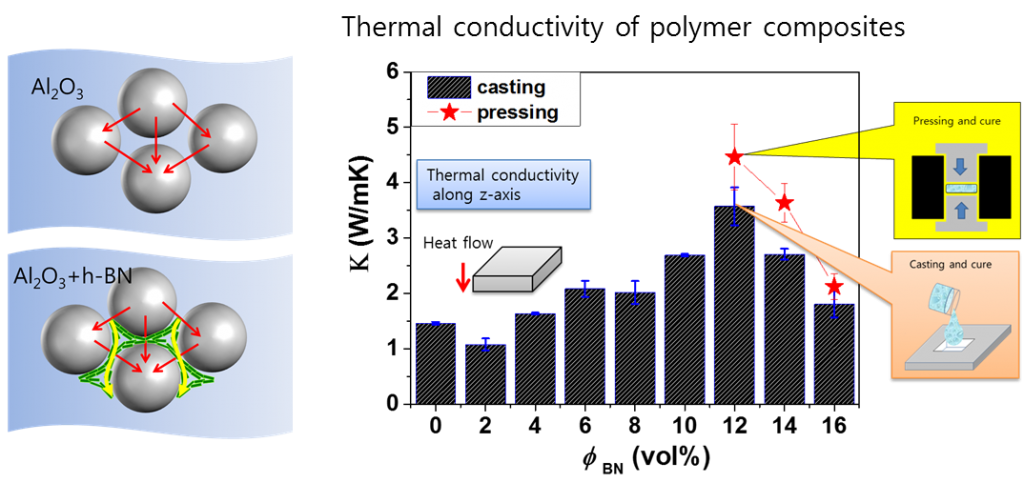Significance Statement
Recent advances in microelectronic technology have seen a rapid increase in the power density of electronic devices. This is due to miniaturization/integration of device elements, high power condition and operation at high frequency. As a result, thermal problems which are popular for causing power leakages which lead to a decline in device efficiency have become rampant. The best resolve for this problem is the efficient removal of the accumulated heat. Consequently, various thermal management materials, mainly polymer composites, have been developed and employed as a part of electronic packaging. Amongst, thermal interface materials, which act by filling the air gap between the chips and heat sinks suppressing the thermal bottleneck at the interface, possess the most potential. Boron nitride particles with a hexagonal crystal structure have recently been identified as the most effective filler due to their high chemical stability and unique physical properties. However, the application of such thermally conductive composites require an efficient through-plane heat transfer mechanism which presently is the dominant challenge.
Researchers led by Dr. Young-Kuk Kim at the Korea Institute of Materials Science in South Korea, proposed a study to demonstrate the highly enhanced through-plane thermal conductivity of polymer composites by surface wetting/segregation of boron nitride nanoplatelets with high thermal conductivity on the surface of spherical alumina particles. Their main goal was to report on the enhanced thermal conduction of alumina-based polymer composite by surface wetting and texturing of thermally conductive hexagonal structured boron nitride nanoplatelets of a large anisotropy in morphology and physical properties. Their research work is now published in the journal, Composites: Part A.
The research team began their work by acquiring the relevant materials. They then prepared the thermally conductive polymer composites using hybrid fillers of alumina macrobeads and surface modified hexagonal structured boron nitride nanoplatelets. Nanosized thermal silica was added and its effects on the diffusivity of the polymer composites observed. Lastly, the team characterized and analyzed the clustering of the hexagonal boron nitride nanoplatelets based on the depletion interaction of colloidal particles.
Young-Kuk Kim and colleagues observed that the addition of the nano silica affected the properties of the colloidal systems by enhancing their thermal transport properties. They also noted that the dispersion of the hexagonal boron nitride nanoplates in the alumina-containing polymer composites was beneficial as it improved the heat transport efficiency of the polymer composites.
Within, the synergistic effects of spherical alumina and hexagonal boron nitride nanoplatelets for efficient thermal transport in polymer composites have been demonstrated. It has been observed that the addition of boron nitride nanoplatelets boosts the thermal conductivity of the alumina based polymer composite to more than twice the thermal conductivity of pristine polymer composites without the boron nitride nanoplatelets. The results obtained in their study are excellent and give an insight to the benefits of surface wetting for thermal management composite materials.

Reference
Young-Kuk Kim, Jae-Yong Chung, Jung-Goo Lee, Youn-Kyung Baek, Pyoung-Woo Shin. Synergistic effect of spherical Al2O3 particles and BN nanoplates on the thermal transport properties of polymer composites. Composites: Part A 98 (2017) 184–191
Go To Composites Part A: Applied Science and Manufacturing
 Advances in Engineering Advances in Engineering features breaking research judged by Advances in Engineering advisory team to be of key importance in the Engineering field. Papers are selected from over 10,000 published each week from most peer reviewed journals.
Advances in Engineering Advances in Engineering features breaking research judged by Advances in Engineering advisory team to be of key importance in the Engineering field. Papers are selected from over 10,000 published each week from most peer reviewed journals.


